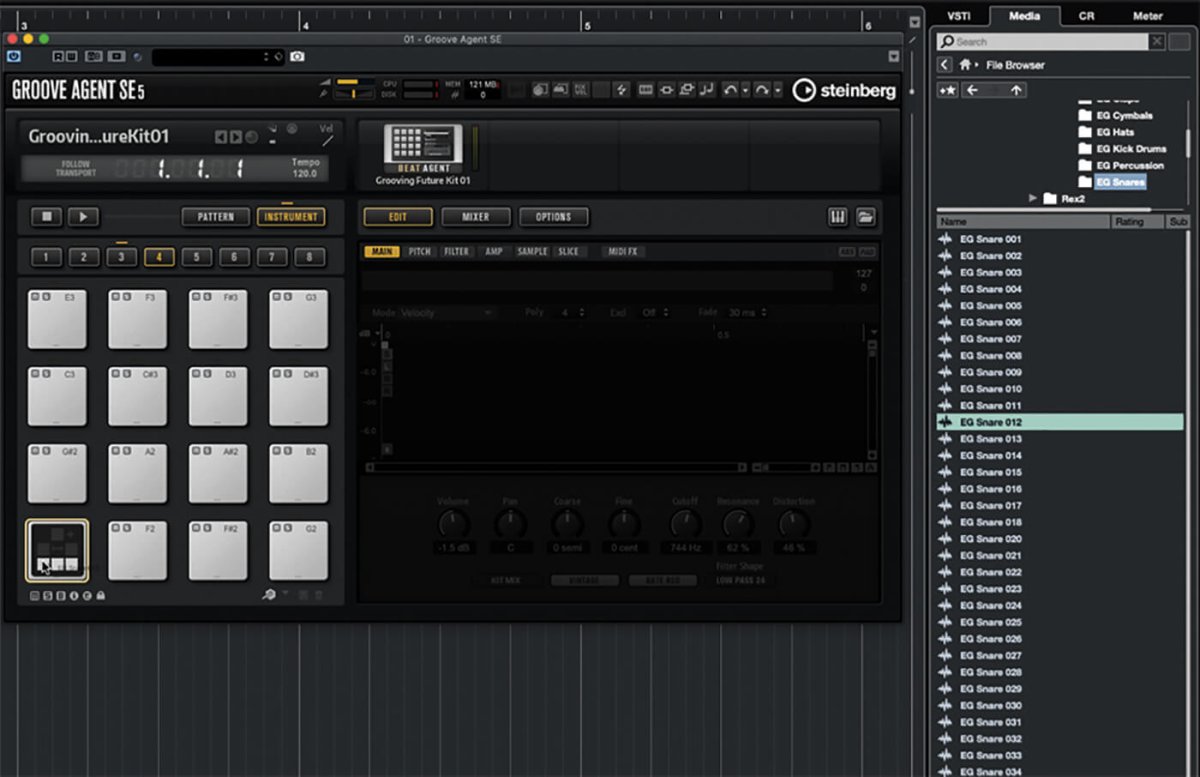


These envelopes are available on the Pitch, Filter, and Amp tabs. The Main tab gives you access to the sample mapping of the pad as well as to the most important parameters.īeat Agent SE features pitch, filter, and amplifier envelopes. The mapping view shows the sample mapping of the selected pad. This is useful if you want to reuse your pads, or use them as basis for other instruments. You can load your saved instruments to an instrument pad. You can save Beat Agent SE instrument pads with all their settings as separate instruments. Therefore, you can exchange the position of pads. However, in some cases, you may want to display pads from other groups within a particular group. This allows you to apply external effect plug-ins to your samples or apply internal effects to the samples on a single pad, for example.īy default, instrument pads are sorted chromatically, based on the standard mapping. You can assign the output of an instrument pad to one of the available output busses. You can be move and copy samples between pads, and even between different pad groups, using drag and drop.
#CUBASE GROOVE AGENT SE4 FULL#
Pattern pads trigger MIDI drum patterns or styles.īeat Agent SE is a full beat production instrument with all the tools and sounds to create amazing beats for any electronic or urban music genre. Instrument pads are used to trigger samples. Groove Agent SE features two different types of pads: instrument pads and pattern pads.
#CUBASE GROOVE AGENT SE4 HOW TO#
The following sections describe how to load, save, and manage the different kinds of sound files in Groove Agent SE. Please note that Groove Agent ONE is only officially supported in Cubase (Artist) 5 through Cubase (Artist) 7.5.These sections help you to get started with Groove Agent SE and introduce program functions and settings. Next time you start Cubase 8 (or Cubase Artist 8 or later), Groove Agent ONE will be available. Only for 32-bit installations of Cubase on a Windows 64-bit system:Ĭ:\Program Files (x86)\Steinberg\Cubase 8\VST3 This is the default path for Cubase Pro (or Artist) 8: Move the files 'Groove Agent ONE.vst3' and 'Groove Agent ONE.bin' from the 32-bit and/or 64-bit folder to the corresponding Cubase folder on your system.

This is where the file 'Groove Agent ONE.vst3' needs to be placed. Inside the Contents folder, open the 'VST3' folder.In the newly opened window, open the 'Contents' folder.Select 'Show Package Contents' from the contextual menu that pops up.Right-click on the Cubase application, for example 'Cubase 8'.The contained file 'Groove Agent ONE.vst3' needs to be moved to a folder inside Cubase's program package.Download and unzip this file: Groove_Agent_ONE_Mac.zip.
#CUBASE GROOVE AGENT SE4 MAC OS X#
If you still need Groove Agent ONE in later Cubase versions for compatibility reasons, please follow these steps: Mac OS X In Cubase Pro 8 and Cubase Artist 8, Groove Agent ONE has been replaced by Groove Agent SE. Groove Agent ONE has been introduced with Cubase 5 and Cubase Artist 5.


 0 kommentar(er)
0 kommentar(er)
